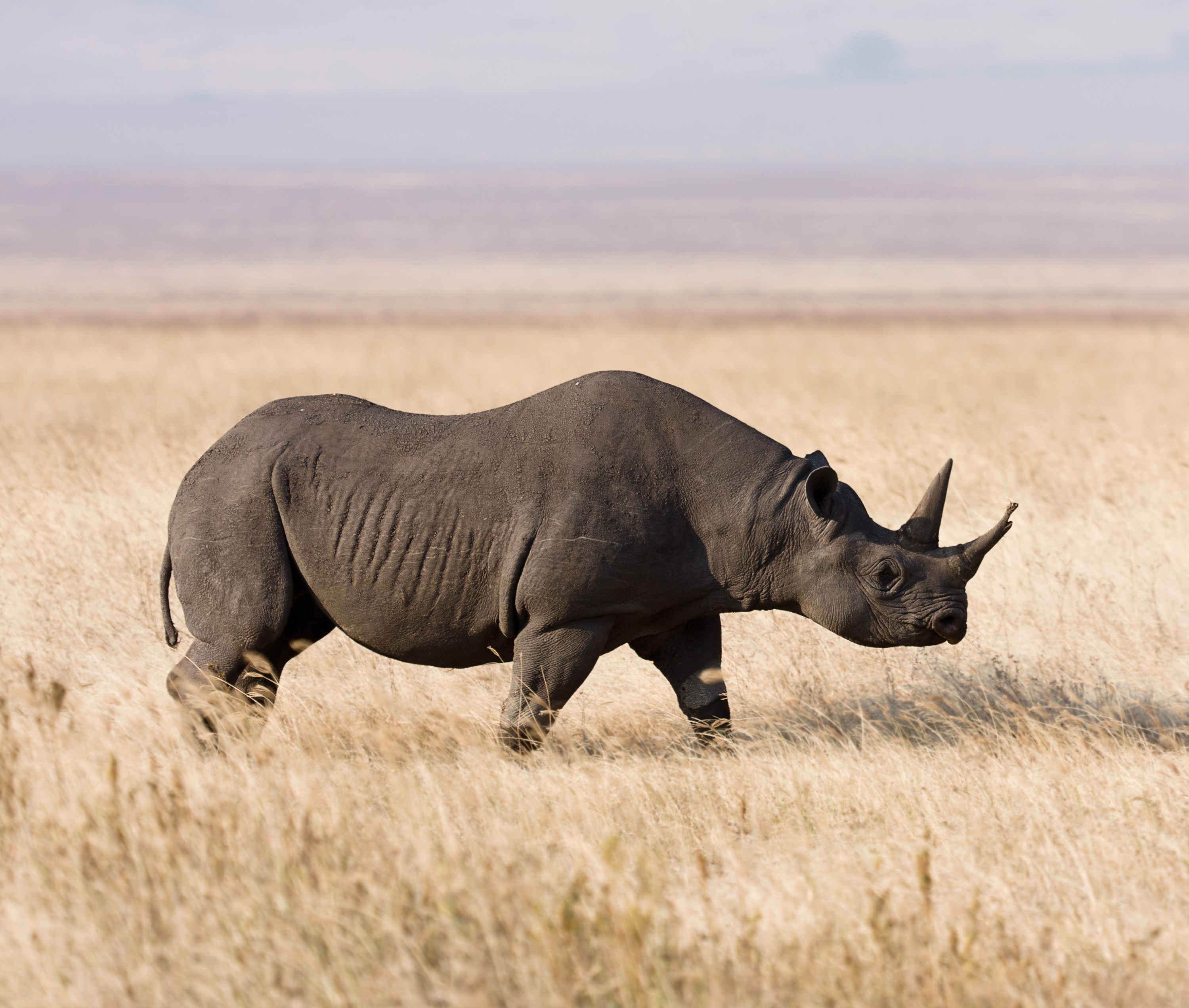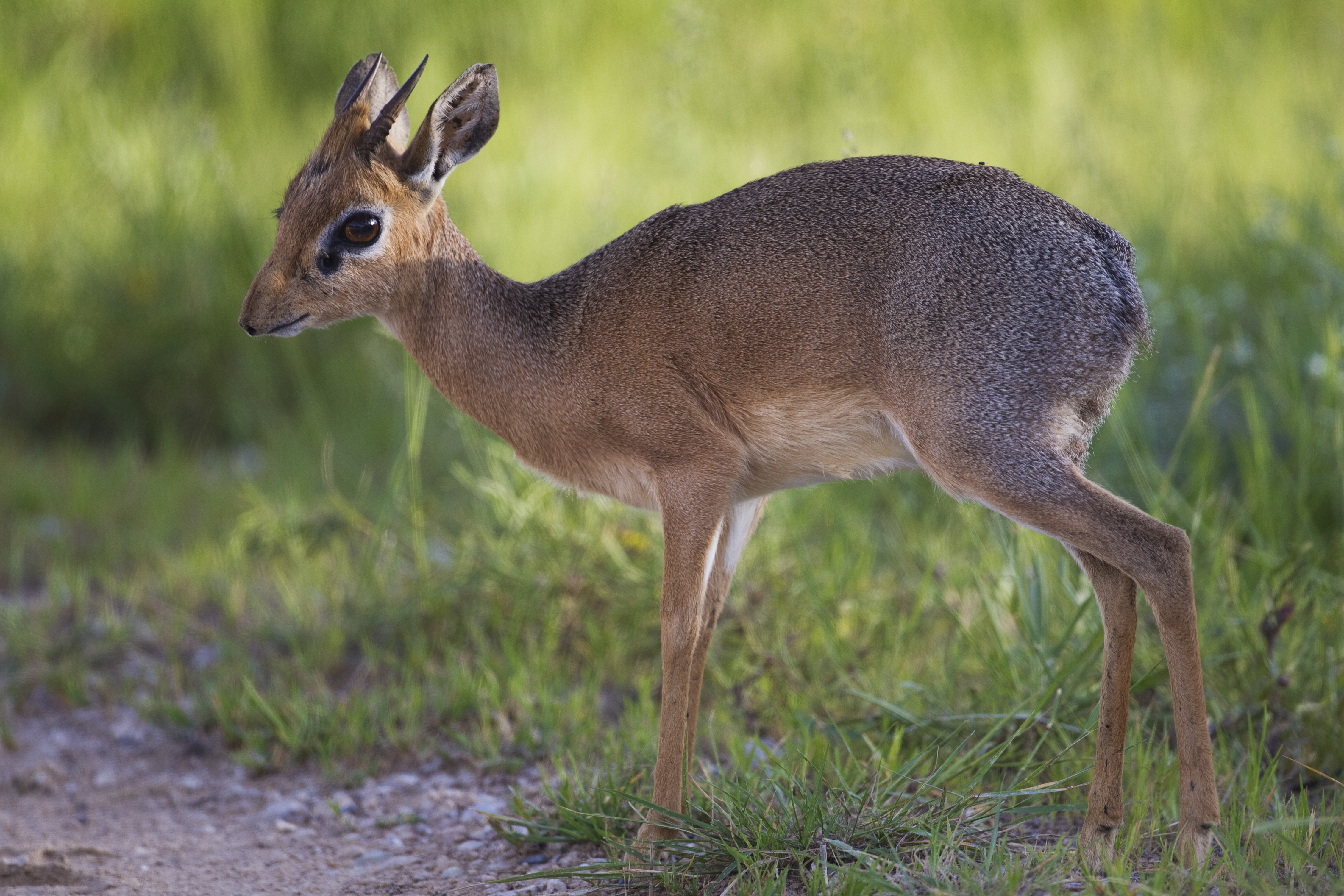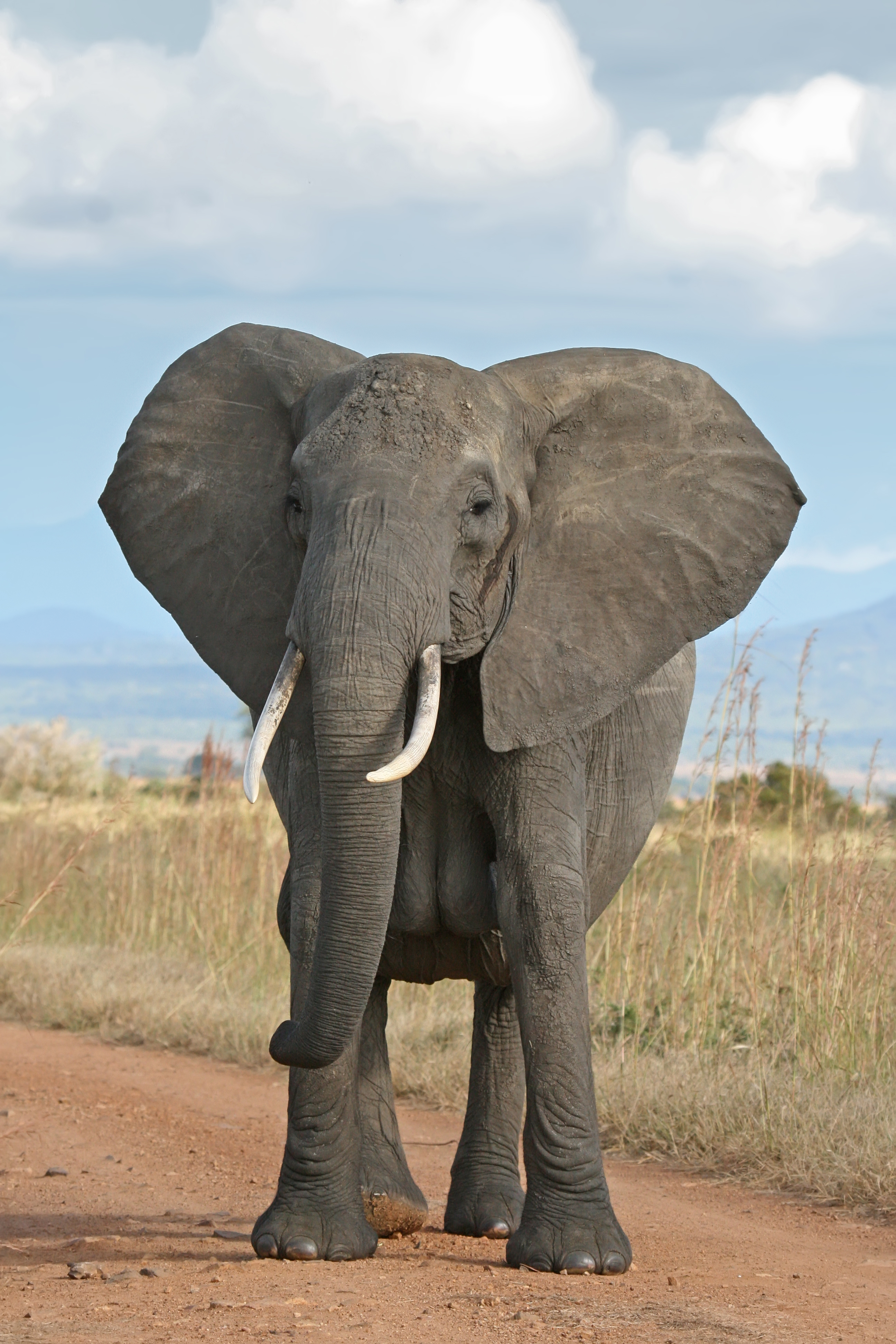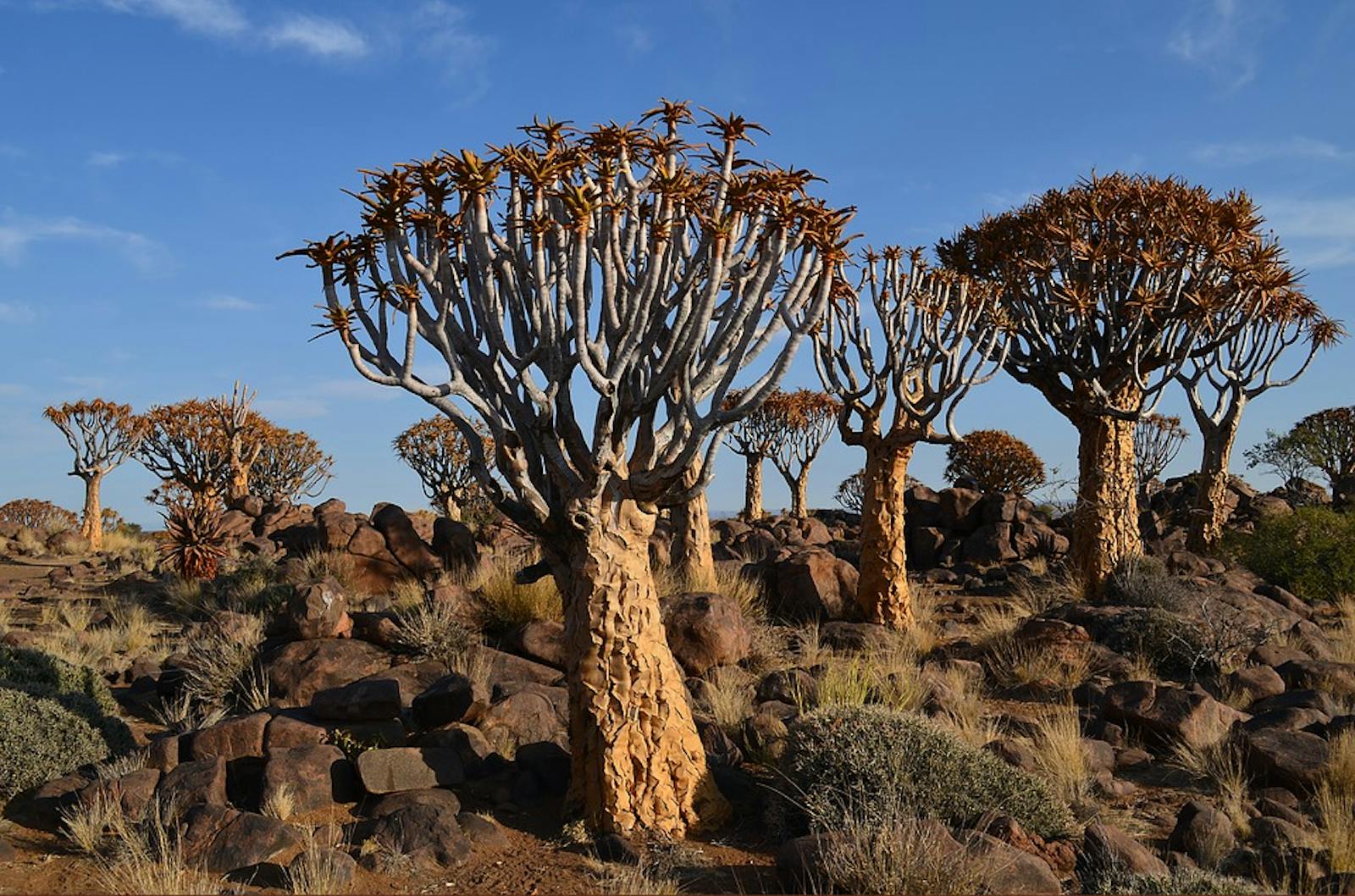Namibian Savanna Woodlands
The ecoregion’s land area is provided in units of 1,000 hectares. The protection goal is the Global Safety Net (GSN1) area for the given ecoregion. The protection level indicates the percentage of the GSN goal that is currently protected on a scale of 0-10.
Bioregion: Southwest African Coastal Drylands (AT10)
Realm: Afrotropics
Ecoregion Size (1000 ha):
10,333
Ecoregion ID:
104
Conservation Target:
53%
Protection Level:
8
States: Namibia, Angola
The only large mammal endemic to Namibia and near-endemic to the ecoregion is the Hartmann’s zebra (Equus zebra hartmannae). It is one of two subspecies of the mountain zebra and is highly threatened by annual harvesting (approximately 2,000–3,000 individuals per year), mainly for the commercial trade in their skins. Other threats to this subspecies include livestock production and farming activities such as fencing preventing access to water sources.

The flagship species of the Namibian Savanna Woodlands ecoregion is the Hartmann's zebra (Equus zebra hartmannae). Image Credit: Yathin S Krishnappa, Wiki Creative Commons.
The ecoregion covers the narrow escarpment inland of the Namib Desert and broadens gradually towards the south, where it comprises extensive areas of the Nama Karoo plateau south of the town of Mariental. The rainfall is low, ranging from 60 millimeters (2.4 in) in the west to 200 millimeters (7.9 in) in the east. Most rain falls as thundershowers in the summer months, from October to March. There is great variation between years, with the driest years having the least predictable rainfall. Low humidity results in extreme temperatures, with temperatures dropping as low as -9°C (16°F) in places. The mean maximum monthly temperature can occasionally exceed 40°C (104°F). Mountains such as the Baynes (2,038 m/6,686 ft)), Erongo (2,319 m/7,608 ft), Naukluft (1,974 m/6,476 ft), Spitzkoppe (1,759 m/5,770 ft), and the Gamsberg (2,347 m/7,700 ft) lie along the escarpment edge, which is narrow and deeply dissected.
The vegetation of this ecoregion is highly varied, reflecting diverse topographic factors and related soil and microclimate characteristics. Colophspermum mopane, Sesamonthamnus benguellensis and S. guerichii characterize mopane savanna in the north and east of the ecoregion. The semi-desert and savanna transition zone supports a great variety of species, many of which are endemic. Characteristic species include Euphorbia guerichiana, Cyphostemma spp., Adenolobus spp., the quiver tree, and Moringa ovalifolia. The genus Commiphora is characteristic of both the mopane savanna and the transition zone. To the south, the vegetation becomes more open and is classified as dwarf shrub savanna, with characteristic species such as Rhigozum trichotomum, Acacia nebrownii, Boscia foerida, and Catophractes alexandri.

Black rhino (Diceros bicornis). Image Credit: Wiki Creative Commons.
The Kaoko Escarpment represents one of Namibia’s two internationally recognized distinct hotspots, defined as areas of high endemism and high species richness. Most of the endemics are clustered around the Brandberg Mountain and rugged mountains of the escarpment, with a few around the Khomas Highlands north of Windhoek. One of the most striking plants of the Brandberg Mountain is the Brandberg acacia. Many plant species are also taxonomically isolated, for example, the monotypic genera Phlyctidocarpa and Kaokochloa. Intense speciation has occurred within the Petalidium genus.
This ecoregion is also a center of faunal endemism and species richness, with a high number of Namibian endemic invertebrates, amphibians, reptiles, mammals, and birds. Endemic and near-endemic mammals comprise mainly bats, rodents, and small carnivores. The Namaqua slender mongoose and Shortridge's rock mouse are restricted in range to the escarpment. Among the larger mammals, the ecoregion is well-known for its desert-dwelling populations of elephant and black rhinoceros.
Other large mammal species include greater kudu, springbok, gemsbok, Damara dik-dik, and black-faced impala. Predators include lions, leopards, cheetahs, bat-eared foxes, and Cape foxes. Endemic bird species are found in the rocky habitats of the ecoregion at elevations between 600 and 1,200 meters (1,968-3,937 ft). Characteristic species include chatshrike, Monteiro’s hornbill, violet woodhoopoe, Herero chat, Damara rock jumper, Carp’s tit, Rüppell’s parrot, Hartlaub’s francolin, and Cinderella waxbill.

Damara dik dik (Madoqua kirkii). Image Credit: Yathin S Krishnappa, Wiki Creative Commons.
Namibia’s recent biodiversity assessment identified the Kaoko Escarpment in the northern part of this ecoregion as an endemism hotspot. Yet, it represents one of the most significant gaps in habitat protection within Namibia. Since Namibia’s Independence in 1990, rural communities in the Kunene and Erongo political regions have established communal conservancies. The southern part of the Namib Escarpment ecoregion is also poorly protected. Only a small portion of the Namib-Naukluft National Park extends into the ecoregion to include the Naukluft Mountains, southwest of Windhoek. Other protected areas include Buffalo and Namibe partial reserve and Chimalavera Natural Regional Park in Angola, Ai-Ais Hot Springs and Iona National Parks, and Gaingu, Tsiseb, Torra, Puros, Orupembe Communal Conservancies in Namibia.

African bush elephant (Loxodonta africana). Image Credit: Muhammad Mahdi Karim, Wiki Creative Commons.
While bush encroachment may benefit some species, it leads to a reduction in overall wildlife abundance and is therefore seen as negative for conservation in the ecoregion. Poaching is a present-day threat to wildlife, especially to the unfenced black rhino population. In an attempt to control poaching, these rhinos were de-horned and have previously been translocated to the Etosha Pan National Park. Plant poaching by collectors of succulent species along the southern escarpment is impacting the flora. Illegal trade in spectacular succulent species is believed to be considerable. The Namib Escarpment has recently become a popular destination for off-road enthusiasts which has led to soil compaction and visual scarring of the landscape. Lastly, the mining activities in this region have resulted in landscape alteration, including soil and water contamination, as well as the loss of critical habitats.
The priority conservation actions for the next decade
1) Enhance law enforcement against illegal trade in wildlife products and the unregulated harvesting of plants.
2) Restore and rehabilitate land degraded by mining practices and limit mining activities in biodiversity-sensitive areas.
3) Encourage participation in community-based natural resource management as well as capacity-building in these communities.
-
-
1. Burgess, N., Hales, J.A., Underwood, E., Dinerstein, E., Olson, D., Itoua, I., Schipper, J., Ricketts, T. and Newman, K. 2004. Terrestrial ecoregions of Africa and Madagascar: a conservation assessment. Island Press.
2. Government of the Republic of Namibia. 2014. Namibia’s Second National Biodiversity Strategy and Action Plan 2013-2022. Windhoek: Ministry of Environment and Toursim.
3. Mufune, P. 2015. Community Based Natural Resource Management (CBNRM) and Sustainable Development in Namibia. Journal of Land and Rural Studies. 3(1), pp.121-138.
4. Novellie, P. 2008. Equus zebra. The IUCN Red List of Threatened Species 2008. [Online]. [Accessed 19 April 2018]. Available from: http://www.iucnredlist.org/details/7960/0. -
Cite this page: Namibian Savanna Woodlands. Ecoregion Snapshots: Descriptive Abstracts of the Terrestrial Ecoregions of the World, 2021. Developed by One Earth and RESOLVE. https://www.oneearth.org/ecoregions/namibian-savanna-woodlands/
-





